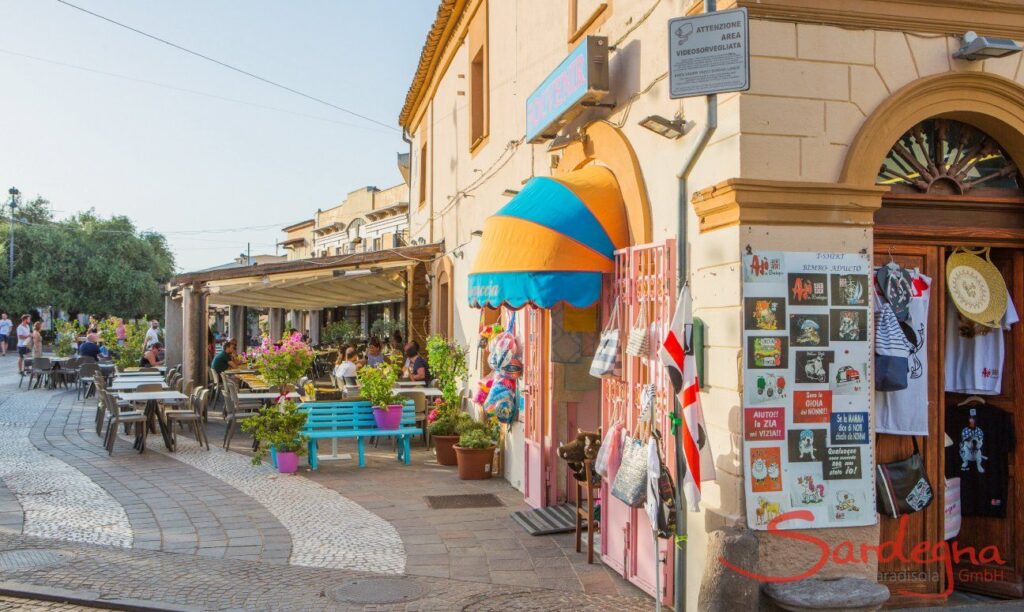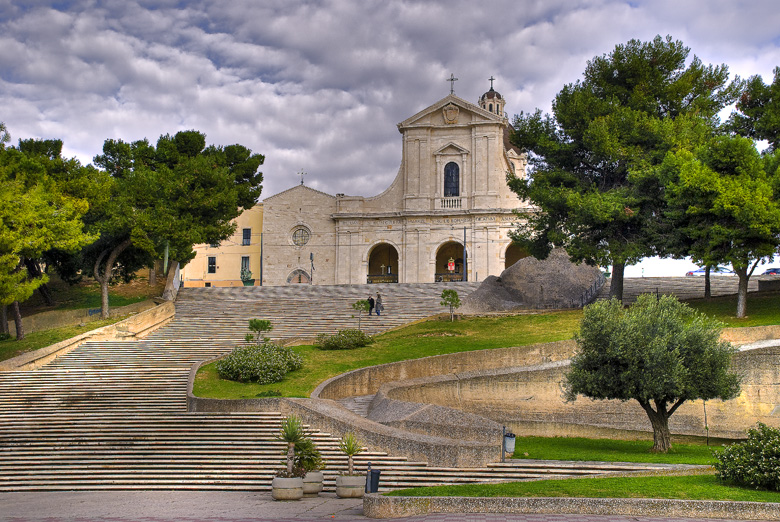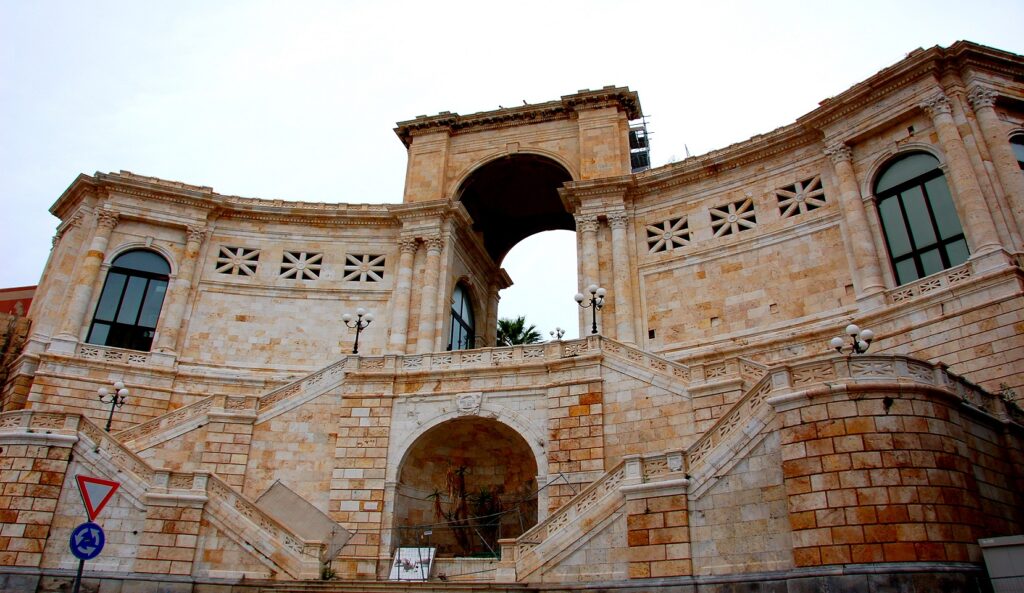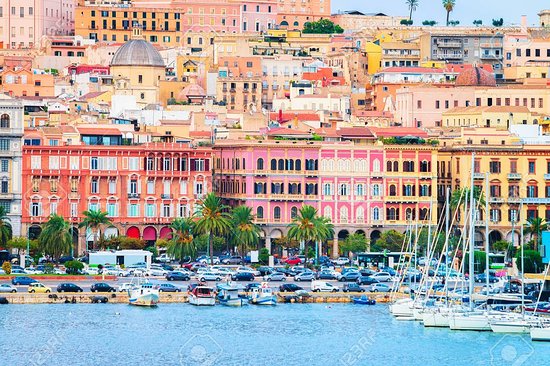Top Attractions
Castello
Castello is the most ancient of Cagliari’s historic districts. It is located on top of a hill at about 100 meters (328 feet) above sea level, and has always been the place where nobles and rulers used to live and conduct their business.
The correlation between the aristocracy and the district was so close and taken for granted that the place ended up being associated with the nobles’ manor (in Italian, castello) so much that it became more than a symbol and a landmark, and it gave the name to the whole area.
The district can only be accessed by going through the ancient doors: it is surrounded by the defensive walls that have protected it for centuries, and that still keep it separate from the rest of the city (though most of it the walls are not visible today).

Cagliari Boat Tour
On board our boat you can enjoy a unique experience that will allow you to discover Cagliari from a different perspective. You will visit the crystal clear waters of the South Sardinia coasts, aboard an iconic boat equipped with awning and cushions.
You will have the opportunity to enjoy an unforgettable half day among the beaches of Cagliari, visiting the charming Cala Bernat cove, the Sella del Diavolo, the Cala Fighera beach and the Calamosca beach. During the tour you will also have a Sup at your disposal to make your baths more pleasant and you can savor a platter of typical Sardinian cold cuts and cheeses accompanied by a fresh glass of wine.

Cagliari Boat Tour
On board our boat you can enjoy a unique experience that will allow you to discover Cagliari from a different perspective. You will visit the crystal clear waters of the South Sardinia coasts, aboard an iconic boat equipped with awning and cushions.
You will have the opportunity to enjoy an unforgettable half day among the beaches of Cagliari, visiting the charming Cala Bernat cove, the Sella del Diavolo, the Cala Fighera beach and the Calamosca beach. During the tour you will also have a Sup at your disposal to make your baths more pleasant and you can savor a platter of typical Sardinian cold cuts and cheeses accompanied by a fresh glass of wine.
Basilica Madonna di Bonaria
Crowning the Bonaria hill, around 1km southeast of Via Roma, this religious complex is a hugely popular pilgrimage site.
Devotees come from all over the world to visit the understated 14th-century Gothic church sanctuary and pray to Nostra Signora di Bonaria, a statue of the Virgin Mary and Christ that supposedly saved a ship’s crew during a storm.
To the right of the sanctuary, and accessible through a connecting door, the towering basilica still acts as a landmark to returning sailors.
Cagliari Cathedral
Cagliari Cathedral (Italian: Duomo di Cagliari, Cattedrale di Santa Maria e Santa Cecilia) is a Roman Catholic cathedral in Cagliari, Sardinia, Italy, dedicated to the Virgin Mary and to Saint Cecilia. It is the seat of the archbishop of Cagliari.
The church was built in the 13th century in Pisan-Romanesque style, obtaining cathedral status in 1258. In the 17th and 18th centuries it was renovated along Baroque lines. In the 1930s it finally received the current façade, in Neo-Romanesque style, inspired by Pisa Cathedral.
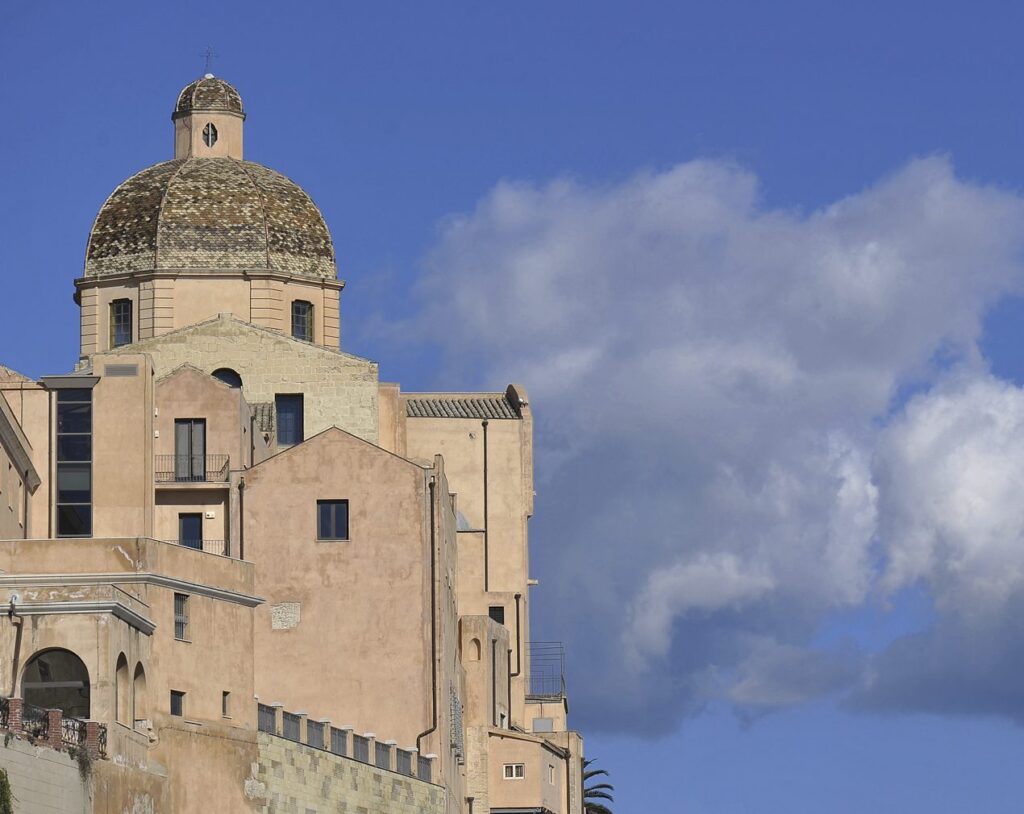
Cagliari Cathedral
Cagliari Cathedral (Italian: Duomo di Cagliari, Cattedrale di Santa Maria e Santa Cecilia) is a Roman Catholic cathedral in Cagliari, Sardinia, Italy, dedicated to the Virgin Mary and to Saint Cecilia. It is the seat of the archbishop of Cagliari.
The church was built in the 13th century in Pisan-Romanesque style, obtaining cathedral status in 1258. In the 17th and 18th centuries it was renovated along Baroque lines. In the 1930s it finally received the current façade, in Neo-Romanesque style, inspired by Pisa Cathedral.
Bastione Saint Remy
Terme di Sardara
Set in the lush greenery of the softly rounded hills of Monreale, the Antiche Terme Hotel belongs to a Wellness Centre and Health Spa complex.
It has 95 rooms with 170 bed spaces. Set in an extensive park, it has a restaurant seating 250, a bar, meeting hall, fitness room, two spa pools, a jogging & fitness track, bowling green, mountain bike rental and free private car park. Thanks to its position, the hotel is also an ideal base for discovering the area’s cultural, archaeological and natural treasures.
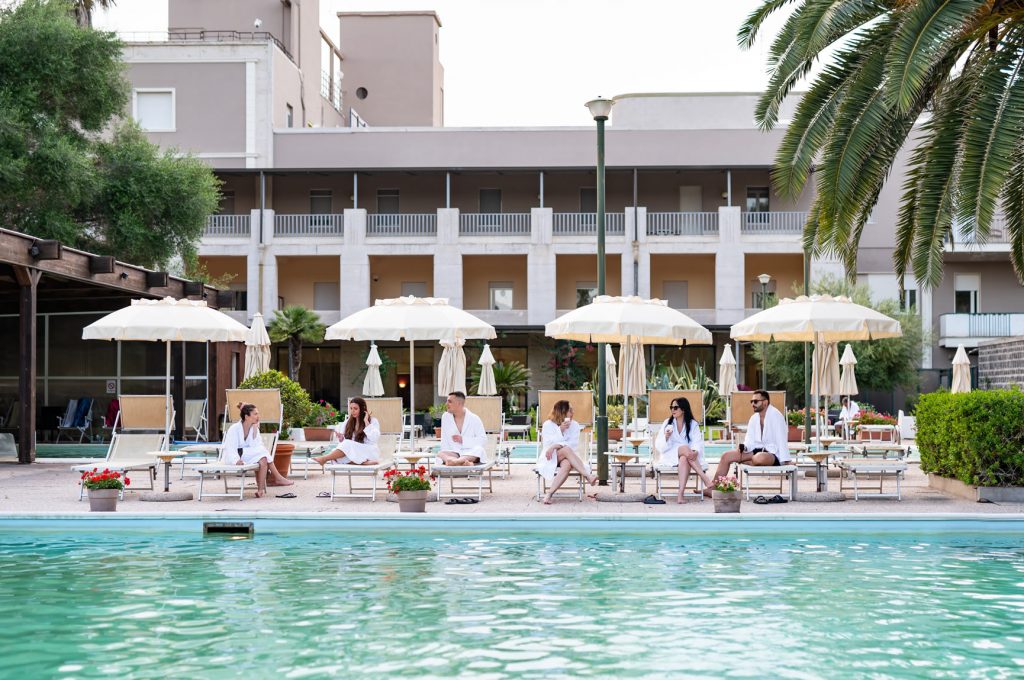
Terme di Sardara
Set in the lush greenery of the softly rounded hills of Monreale, the Antiche Terme Hotel belongs to a Wellness Centre and Health Spa complex.
It has 95 rooms with 170 bed spaces. Set in an extensive park, it has a restaurant seating 250, a bar, meeting hall, fitness room, two spa pools, a jogging & fitness track, bowling green, mountain bike rental and free private car park. Thanks to its position, the hotel is also an ideal base for discovering the area’s cultural, archaeological and natural treasures.
Picnic in the Vineyard
After the guided tour of the winery, we will reach the Is Aquas vineyard, on the outskirts of Serdiana, by our own means. The estate, in addition to a lake and its fauna, houses a farm with horses, geese, and goats. A place where time stands still, allowing nature, once again, to dictate its rhythms.
After a short walk among the rows of the vineyard, the experience ends with a tasty picnic in our welcoming equipped area, with the tasting of two wines accompanied by selected local specialties prepared with fresh and genuine ingredients.
Thanks to its position, the hotel is also an ideal base for discovering the area’s cultural, archaeological and natural treasures.
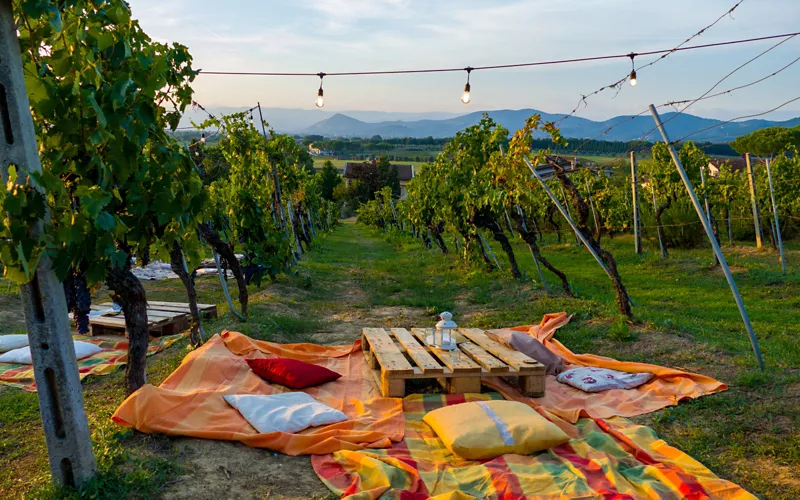
Nuraghe di Barumini
During the late 2nd millennium B.C. in the Bronze Age, a special type of defensive structure known as nuraghi (for which no parallel exists anywhere else in the world) developed on the island of Sardinia. The complex consists of circular defensive towers in the form of truncated cones built of dressed stone, with corbel-vaulted internal chambers.
The complex at Barumini, which was extended and reinforced in the first half of the 1st millennium under Carthaginian pressure, is the finest and most complete example of this remarkable form of prehistoric architecture. Thanks to its position, the hotel is also an ideal base for discovering the area’s cultural, archaeological and natural treasures.
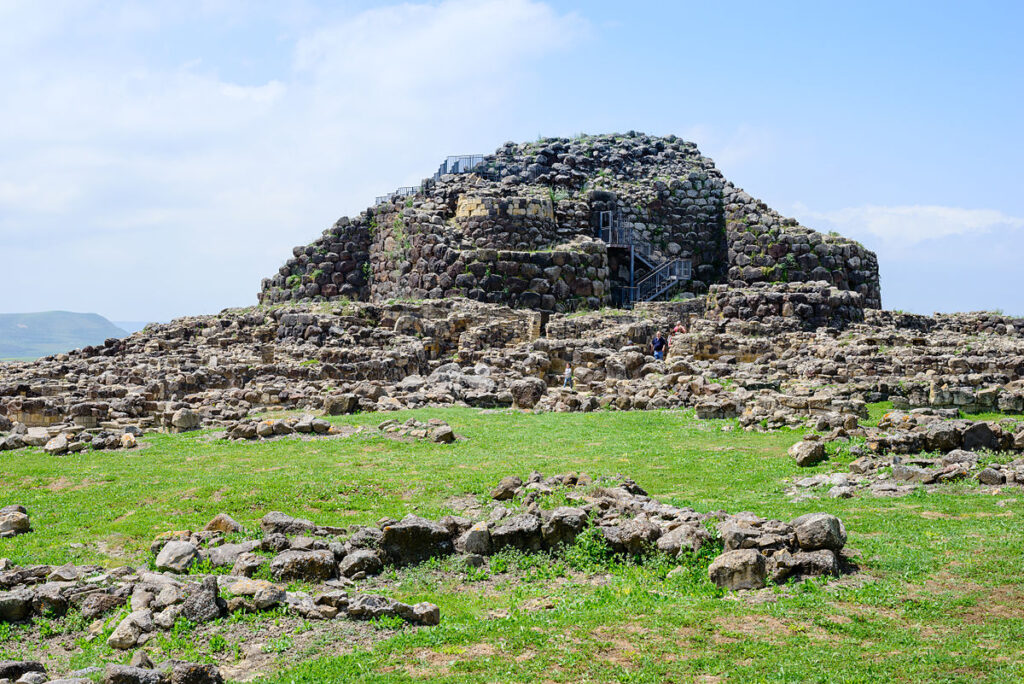
Nuraghe di Barumini
During the late 2nd millennium B.C. in the Bronze Age, a special type of defensive structure known as nuraghi (for which no parallel exists anywhere else in the world) developed on the island of Sardinia. The complex consists of circular defensive towers in the form of truncated cones built of dressed stone, with corbel-vaulted internal chambers.
The complex at Barumini, which was extended and reinforced in the first half of the 1st millennium under Carthaginian pressure, is the finest and most complete example of this remarkable form of prehistoric architecture. Thanks to its position, the hotel is also an ideal base for discovering the area’s cultural, archaeological and natural treasures.
Pula by Night
If you’re on a voyage of discovery to Sardinia, you must not miss a visit to Pula. The village is only a few kilometers from Cagliari.
The origins of the town date back as far as Phoenician times, although the town has since passed under various different rulers, including the Pisans and Aragonese.
The centre of Pula is home to some interesting buildings, such as the neoclassical Villa Santa Maria, designed by Cagliari architect Gaetano Cima, or the Romanesque church of Sant’Efisio, the site of the saint’s martyrdom according to tradition.
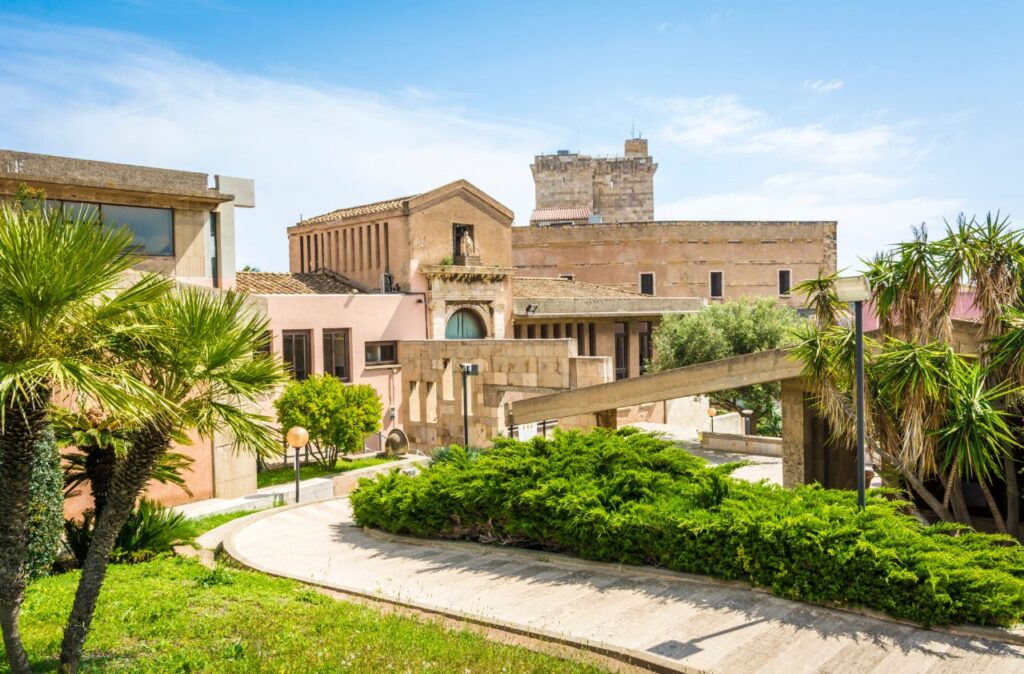
Villasimius
The intense colors of the sea, the glimmering crystal-clear water, granite cliffs, enchanting coves, long stretches of beach, lagoons and verdant hills, some of them are the settings of TV ads and all of them are breathtaking.
Villasimius is the ‘pearl’ of the south, the kind of tourist resort every vacationer dreams of, with a population of less than 4,000 during winter that blossoms to several tens of thousands in summer.
The coastline is graced with a crown of beaches interspersed with inlets and the Capo Carbonara promontory. At night this village in the center offers a nice walking path where you can enjoy nice ice creams, dining restaurants, shopping and more.
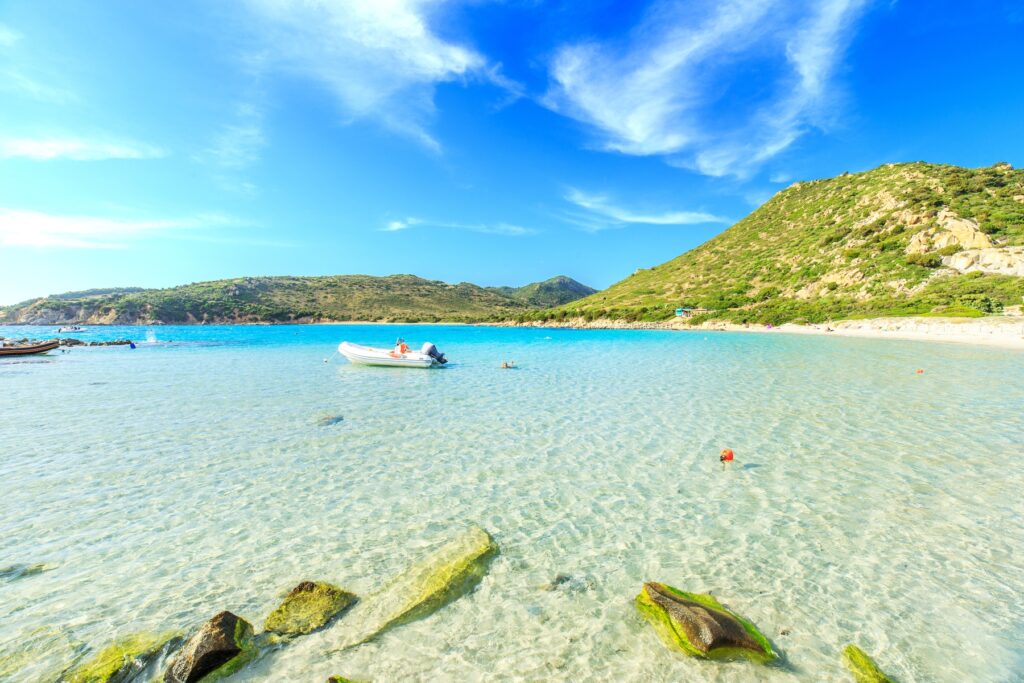
Villasimius
The intense colors of the sea, the glimmering crystal-clear water, granite cliffs, enchanting coves, long stretches of beach, lagoons and verdant hills, some of them are the settings of TV ads and all of them are breathtaking.
Villasimius is the ‘pearl’ of the south, the kind of tourist resort every vacationer dreams of, with a population of less than 4,000 during winter that blossoms to several tens of thousands in summer.
The coastline is graced with a crown of beaches interspersed with inlets and the Capo Carbonara promontory. At night this village in the center offers a nice walking path where you can enjoy nice ice creams, dining restaurants, shopping and more.
Quartiere La Marina
La Marina is one of the four historic districts of Cagliari and has always been an important place for the residents, since very ancient times. This is the harbor district, where workers, sailors, and merchants used to live and run their businesses.
The district was also quite busy thanks to the nearby salt mine, which contributed to the city trades and economy.
Due to its long history and flourishing life, La Marina is still one of the busiest districts in Cagliari, the beating heart of nightlife, and an excellent place for a shopping spree. But it has also lots of culture and history: its churches and historic buildings all deserve a visit, even better if with a tour guide.
Marina Piccola
The tourist port of Marina Piccola is located in the Gulf of Cagliari, SE of the city, at the foot of the hill called “Sella del Diavolo” and at the base of the Poetto, a beach more than 7 km long, and also called “beach of a hundred thousand” because of the number of bathers who flock to it during peak summer periods. In the Marina there are about 350 boats, including fishing boats.
Inside the area there are also an amphitheatre and several dining options. Marina Piccola is 10 minutes from the train and bus station and is well served by public transport.
The airport is about 20/25 minutes away by car.
The district was also quite busy thanks to the nearby salt mine, which contributed to the city trades and economy.
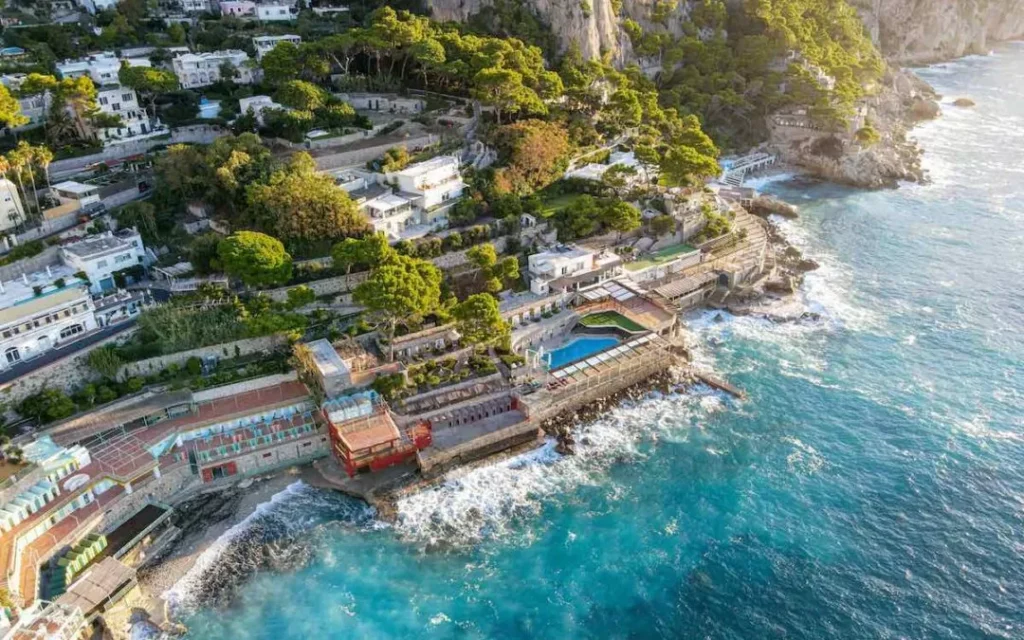
Marina Piccola
The tourist port of Marina Piccola is located in the Gulf of Cagliari, SE of the city, at the foot of the hill called “Sella del Diavolo” and at the base of the Poetto, a beach more than 7 km long, and also called “beach of a hundred thousand” because of the number of bathers who flock to it during peak summer periods. In the Marina there are about 350 boats, including fishing boats.
Inside the area there are also an amphitheatre and several dining options. Marina Piccola is 10 minutes from the train and bus station and is well served by public transport.
The airport is about 20/25 minutes away by car.
The district was also quite busy thanks to the nearby salt mine, which contributed to the city trades and economy.
Anfiteatro Romano
In the center of the island’s capital, between Castello and Stampace, stands the most important and majestic public building of Roman Sardinia – an architectural masterpiece that held ten thousand spectators, and the cultural and social center of ancient Carales.
Mentioned in 19th century letters and studies, the Roman Amphitheatre in Cagliari was rediscovered during the Romantic period, with its passion for the ruins of ancient civilizations. The first excavations by canon Giovanni Spano (1866-68) were followed by archaeologist Doro Levi’s digs (1937-38) and the restoration of the majestic building.
During the first imperial age, neighbourhoods and public buildings were built in Carales, followed by the amphitheatre from the late 1st and early 2nd centuries AD, set in the southern foothills of the Buoncammino hill. It originally occupied more than a thousand square metres, with a 120 metre perimeter and a 20 metre high facade decorated with columns and statues.
Part of the stands (cavea), the arena, corridors and other areas were carved from the rock, while the rest was built using white limestone blocks. The district was also quite busy thanks to the nearby salt mine, which contributed to the city trades and economy.
Due to its long history and flourishing life, La Marina is still one of the busiest districts in Cagliari, the beating heart of nightlife, and an excellent place for a shopping spree. But it has also lots of culture and history: its churches and historic buildings all deserve a visit, even better if with a tour guide.
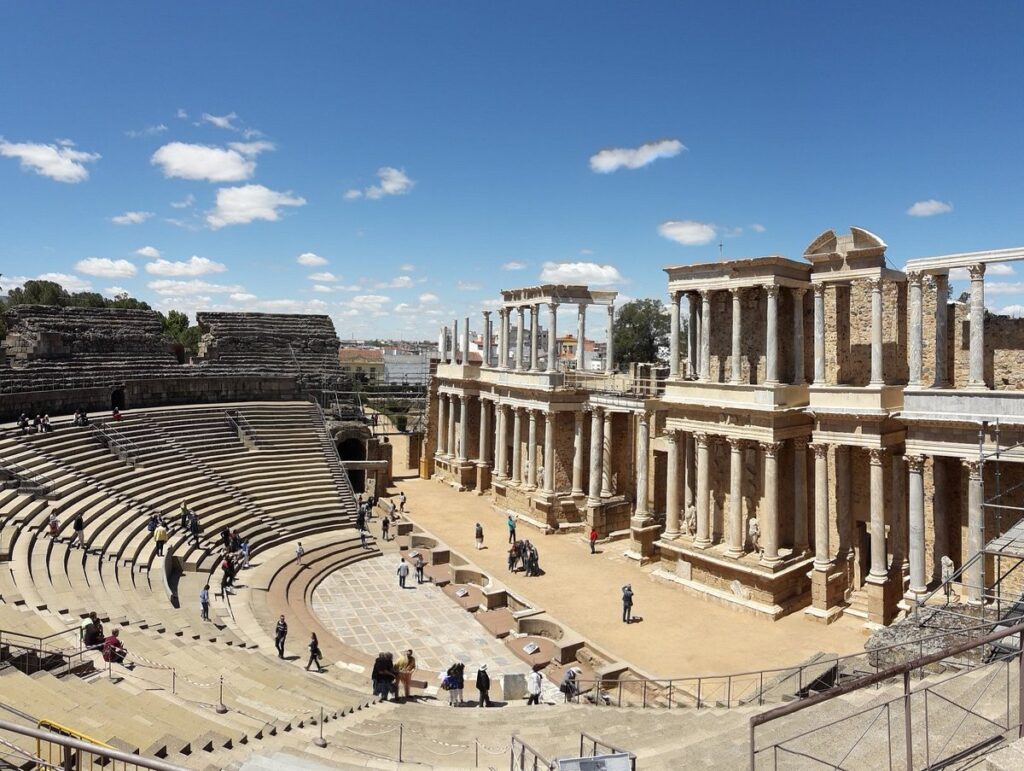
Quad Adventure
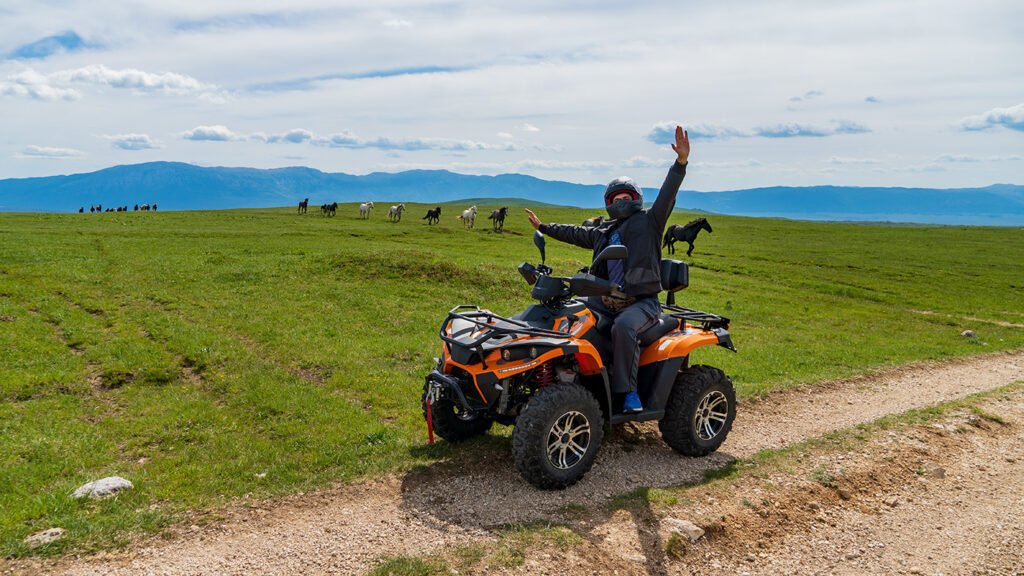
Quad Adventure
Archeological Museum
The National Archaeological Museum of Cagliari, comprising the Archaeological Museum, the Pinacoteca, the San Pancrazio Space, the former Royal Museum and the spaces of Porta Cristina, is an Institute of the Ministry of Culture with special autonomy since 2019.
The museums are located in the ancient Castello district, inside the Citadel of Museums built between 1956 and 1979 with the recovery of the Royal Arsenal and the medieval walls designed by the architects Libero Cecchini and Piero Gazzola.
The archaeological collection includes more than 4000 finds that tell a story that spans almost 7000 years, from Prehistory to the Early Middle Ages, from Neolithic mother goddesses to Nuragic bronzes, from Phoenician and Punic jewelry to Roman statuary to cult objects from the Byzantine era.
The historical-artistic section houses a valuable collection of altarpieces of Catalan-Aragonese culture from the 15th and 16th centuries and pictorial works up to the 20th century.
Inscriptions and coats of arms make up the lapidary that tells the urban and social evolution of the city of Cagliari. Traditional Sardinian fabrics, baskets, weapons, ceramics and jewels, as well as a precious bronze aquamanile from the 11th century, complete the Museum’s rich collection.
